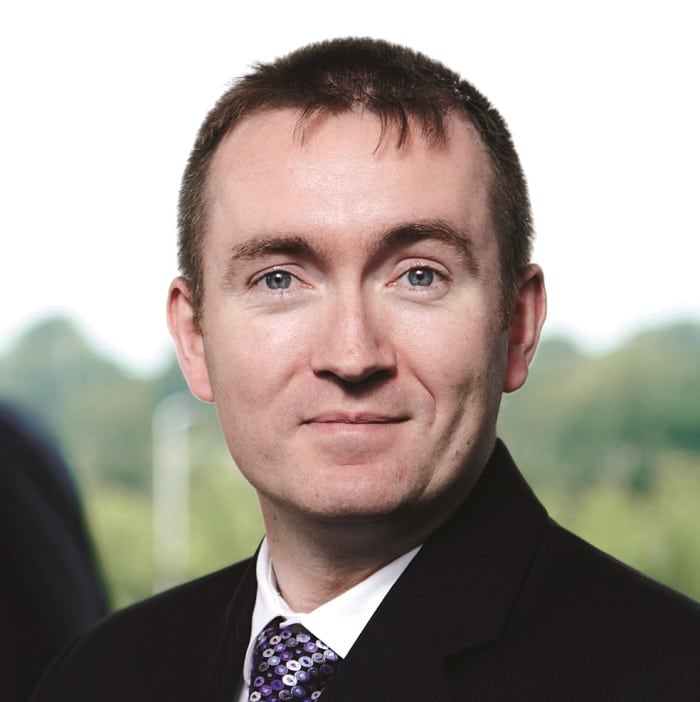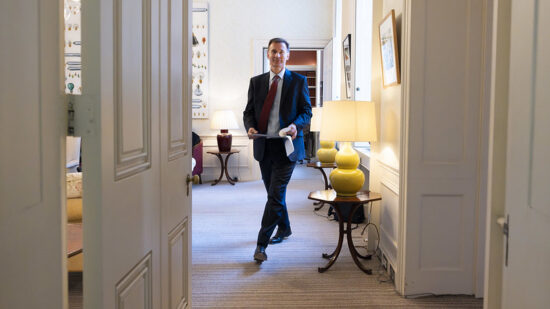In their first interview since landing at Liontrust, the duo revealed to Portfolio Adviser that they are currently hard at work on a strategic bond, global high yield and absolute return strategy.
The three strategies are still subject to regulatory approval. At this point in time, Roberts and Milburn (pictured) are referring to them as “strategies” not “funds” because there may be a UK-version and Irish-domiciled version of one or more strategy.
At this point, they have submitted prospectuses to both the Central Bank of Ireland and the Financial Conduct Authority and have recently heard back from the CBI. They are still waiting on the UK financial services watchdog to respond.
Assuming all goes well with the approval process, which the duo expects will take another four to six weeks, they are aiming to launch at least one fund from one of the strategies by the end of March.
“It’s a tough ask,” Milburn admitted, “but the way I’ve been phrasing it is to say we’d be disappointed if we didn’t have something launched before the end of April. March is touch and go just because of the natural delays in getting all the plumbing sorted but if nothing is launched by the end of April, I’m sure there will be many disappointed people including the two sitting opposite you.”
The strategies
The three strategies are deliberately designed so that there is overlap between them. The top-down data of the strategic product will inform the macro component of the high yield strategy, for instance. And vice versa, the bottom-up picks from the global high yield strategy will populate the high yield selection for the strategic product.
The strategic bond strategy will aim to maximise risk adjusted total return, emphasis on risk adjusted, by investing in a variety of fixed income instruments globally.
The duration of the fund can be between zero and two times the market weight (or around nine years) but will never go negative because “it’s a total return fund, not an absolute return fund or a hedge fund,” said Roberts.
The fund also has the flexibility to change its investment grade component accordingly but will have a 40% hard net limit on high yield, emerging market debt and other junk rated instruments so that riskier credit doesn’t dominate the strategy.
The global high yield strategy will invest predominantly in the US and European markets, “with maybe a bit of sterling and Swiss Franc if there are any great opportunities there,” said Milburn.
“If we were to launch tomorrow, we’re not launching clearly, then our current strong preference would be for the US. We would probably have 60 to 70% of assets in the US based on valuations and that’s the spread valuation.”
Finally, the absolute return strategy will aim to have the majority of its investments in market neutral positions at any point in time to avoid making the same errors of other funds in the sector.
“For us there is a massive trade-off between the amount of return you can target and the risk that entails for investors,” said Roberts. “What we have found in the absolute return space, both in bond and equity land, is that asset management groups, have frequently over-promised and under-delivered and generally the reason for that is because they have been pushed towards too aggressive a target and end up taking market directional risk.”
The duo’s absolute return strategy will target returns of cash +2% net. Although Roberts admits this “doesn’t excite too many people when equity markets come up 20% in two months” he notes that type of return “becomes more important when the equity market is bouncing all over the place and people are just wanting to preserve some capital.”
Life at Liontrust
Roberts and Milburn are shy of one month and two and a half weeks into their latest venture with new employer Liontrust.
They are joined by ex-Baillie Gifford high yield man Donald Phillips, who officially started at the asset manager on Monday. Roberts and Milburn know Phillips very well, having worked with him at Kames (then Aegon), whilst he was a graduate trainee.
Within the team, Phillips will focus predominantly on high yield bottom-up selection and is currently building the high yield model portfolio. Meanwhile, team leader Roberts will spend most of his time conducting top down analysis. Milburn will do a little bit of both.
They will share an office space with the existing sustainable bond team, which Liontrust gained after acquiring Alliance Trust Investments last year, but there won’t be any cross-over between the teams per se, though they may share investment ideas from time to time.
As for how they are settling into their new Edinburgh office, Roberts and Milburn agree that life at Liontrust has “exceeded expectations.” The only notable downside during this honeymoon period is that the pair missed out on the recent flurry of market activity because they didn’t have any money to manage on day one.
The decision to move to Liontrust, an asset manager with historically minimal fixed income expertise, was driven by the allure of building something out of nothing, a fresh start.
Roberts admits this is effectively his fourth time building up a business from scratch. He and Milburn had two opportunities to do that at former employer Kames Capital, turning its small existing fixed team into one of the top mutual fund franchises in the UK and launching an offshore division in 2008. Before that, he did something similar as head of credit at Britannic Asset Management.
“In terms of my personality, I’m a starter/developer, rather than a finisher/completer,” he said. “The buzz for me is building and seeing something grow rather than allowing it to mature and then clip the coupon and take the income. I find that boring.”
“It would be in some ways quite nice to say it was such a mess at Kames we had to get out,” Roberts continued. “The reality was it was fine but not as stimulating. This is my 30th year of doing this stuff and it was pretty much that old cliché of a change being as good as a rest. I personally wanted to change and start afresh effectively and to try again to build something.”
That said, they stressed that they are not looking to replicate what they did at their former employer.
“What we’re not trying to do is, we’re not trying to build a massive empire,” said Milburn. “Back at Kames, in dollar terms, the team was running about $40bn across about 100 portfolios with 30 people. We are not in any way looking to replicate that. We will have one core strategy process, which is a combination of top down and bottom up and that will feed all three strategies that we intend to launch funds within.”







